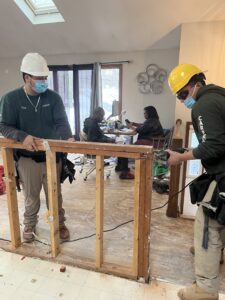Instructors

Program Information
Building and Civil Construction teaches students residential homebuilding carpentry in addition to metal framing, commercial ceiling systems, hardware installation, concrete forming and pouring, rebar installation, structural steel installation, and construction welding techniques. Career pathways are endless and include residential construction, commercial building construction, and civil construction.

